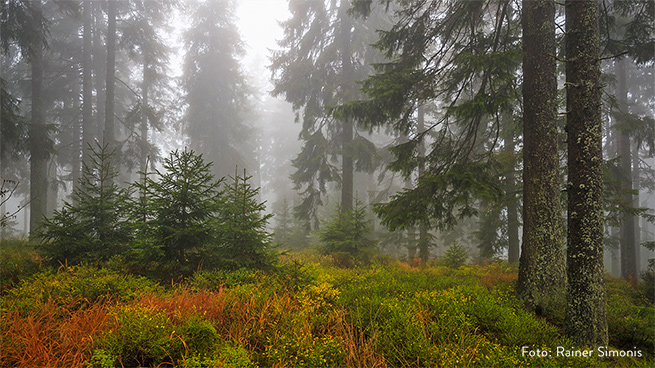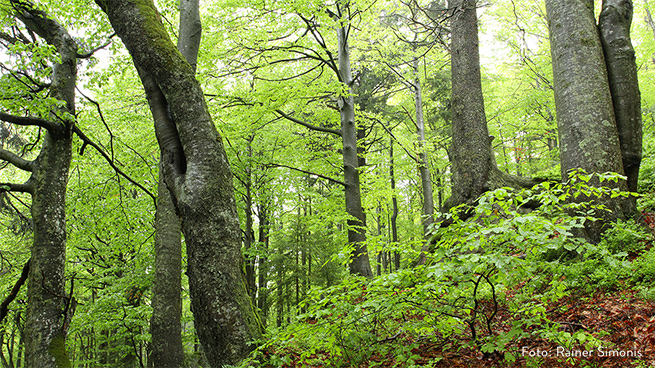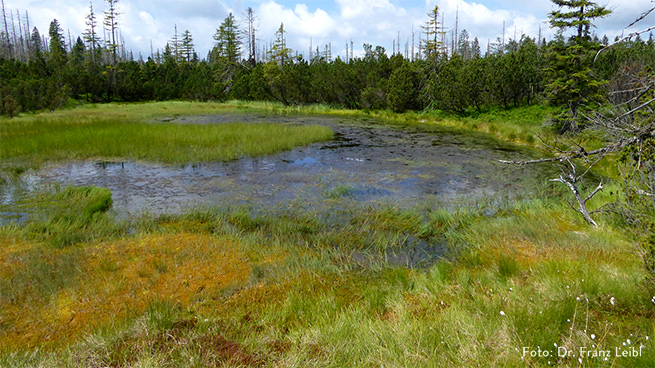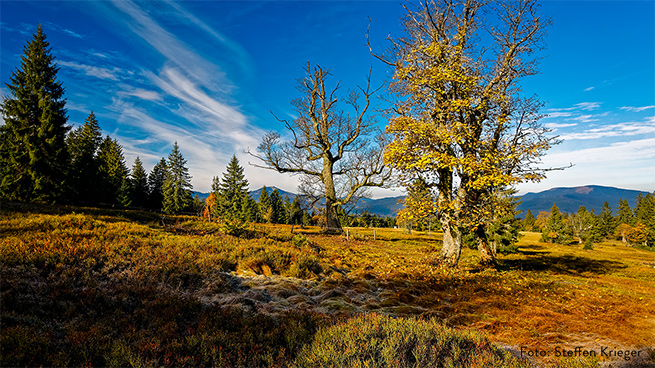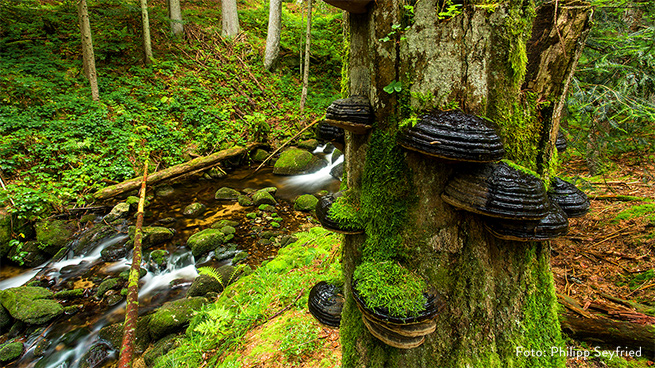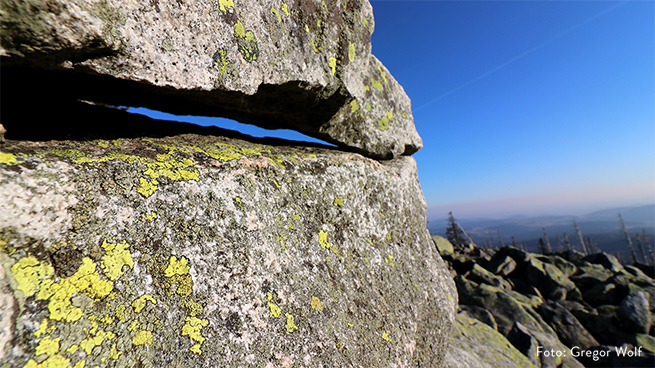
Bayerischer Wald
Habitats
Woodlands
Spruce, beech and fir have been the main tree species in the Bohemian Forest ever since. Their composition and mixing with other tree species - such as ash, sycamore maple or linden - are heavily dependent on climate and location. There are three different types of forest habitats.
Mountain Spruce Forest: Among the exceptional features of Bavarian Forest National Pak are the natural spruce forests in the areas at higher altitude. They remind us of the Taiga forests and are found only in the higher, harsher location of the mountains above 1,100 meters and in the Alps. Snow can often be found in these areas well into the early summer months.
Mixed mountain forests: The southern and south western slopes are much warmer than the areas at high altitude. In addition to the spruce, silver fir, copper beech, and sycamore maple are also to be found here. In terms of area, these mixed forests represent the most significant habitat in our national park. Here, autumn in particular can be an amazing experience with its Bavarian brand of Indian Summer.
Alluvial spruce forest: Cold air flows down from the mountain slopes and comes to rest in damp valley basins. Here, ground frosts even occur in summer and, as in the higher areas, the spruce characterizes the forest. Damp and low temperatures mean that only very few firs, rowans and moor birches get to grow old with the spruce.
Raised bogs
Raised bogs have an aura of the unusual: mosses, grasses and dwarf shrubs predominant herein alternation with water- filled pools and dwarf pines. Only rain water is available to plants in the high raised bogs as large peat bodies cut them off from other sources of water and nutrients.
Schachten (Clearings)
Known as “islands in the forest sea” the Schachten are high altitude unforested areas that came into being as a result of historic pasture use. Matt – grass and flower rich meadows as well as well as gnarled, often centuries old trees display their particular charm and provide varied habitats for numerous and rare species of insects, birds, reptiles and bats.
Water
A 760 kilometer long and dense network of streams crosses the national park. The streams are cold, rich in oxygen and low-nutrient. The Rachelsee, a former glacier lake is the only one of natural origin in the national park. There are also historic “Klausen”, man-made and artificial lakes created for drifting timber wood.
Boulder fields
The boulder fields, as they can be seen on Lusen, seem to be hostile, but are an Eldorado for lichens and ground beetles - many of them genuine relics to the Ice Age. In particular, the green-yellow map lichen cannot be missed – it covers much of the blocks with its characteristic patterns.
